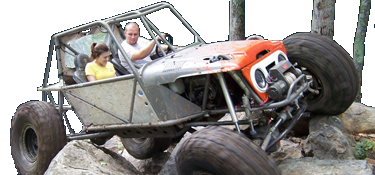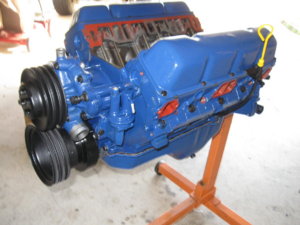TKFireman's CJ7
Let me start by saying that I've never rebuilt an engine/tranny or t-case before. My '80 CJ7 currently has a 304/T176/D300 with edelbrock performer intake, holley TA670, GM HEI ignition and stock exhaust manifolds. I bought a 401 out of a '77 Chief and have been working on rebuilding it for about a year now as funds allowed, hopefully going to start the swap within a few weeks. Plan to rebuild the T176/D300 and carb while I'm at it, add long tube headers and switch to hydraulic clutch set-up. Thought about going to a 5 speed, but thats gonna have to wait for a while. Here is what I have now and some pictures
Engine specs
bored .030 over
crank ground .010/.010
decked .010
rotating assembly balanced to 4 grams out front and rear
master rebuild kit
heads resurfaced
all new springs and rockers - stock
Melling torque cam
new timing cover
new harmonic balancer
new fuel/water pumps
Luk clutch kit
Holley carb rebuild kit
T176 rebuild kit
Dana 300 kit is on order
flowtech long tube headers
How it sits now, have it bagged to keep trash out for now
Let me start by saying that I've never rebuilt an engine/tranny or t-case before. My '80 CJ7 currently has a 304/T176/D300 with edelbrock performer intake, holley TA670, GM HEI ignition and stock exhaust manifolds. I bought a 401 out of a '77 Chief and have been working on rebuilding it for about a year now as funds allowed, hopefully going to start the swap within a few weeks. Plan to rebuild the T176/D300 and carb while I'm at it, add long tube headers and switch to hydraulic clutch set-up. Thought about going to a 5 speed, but thats gonna have to wait for a while. Here is what I have now and some pictures
Engine specs
bored .030 over
crank ground .010/.010
decked .010
rotating assembly balanced to 4 grams out front and rear
master rebuild kit
heads resurfaced
all new springs and rockers - stock
Melling torque cam
new timing cover
new harmonic balancer
new fuel/water pumps
Luk clutch kit
Holley carb rebuild kit
T176 rebuild kit
Dana 300 kit is on order
flowtech long tube headers
How it sits now, have it bagged to keep trash out for now




 Here is mine.
Here is mine.